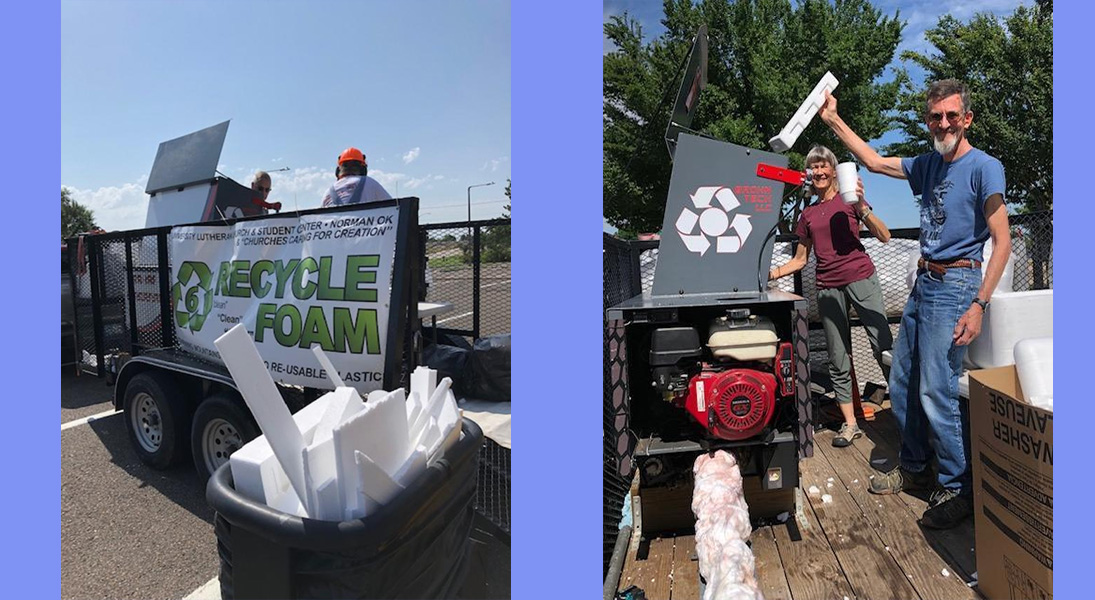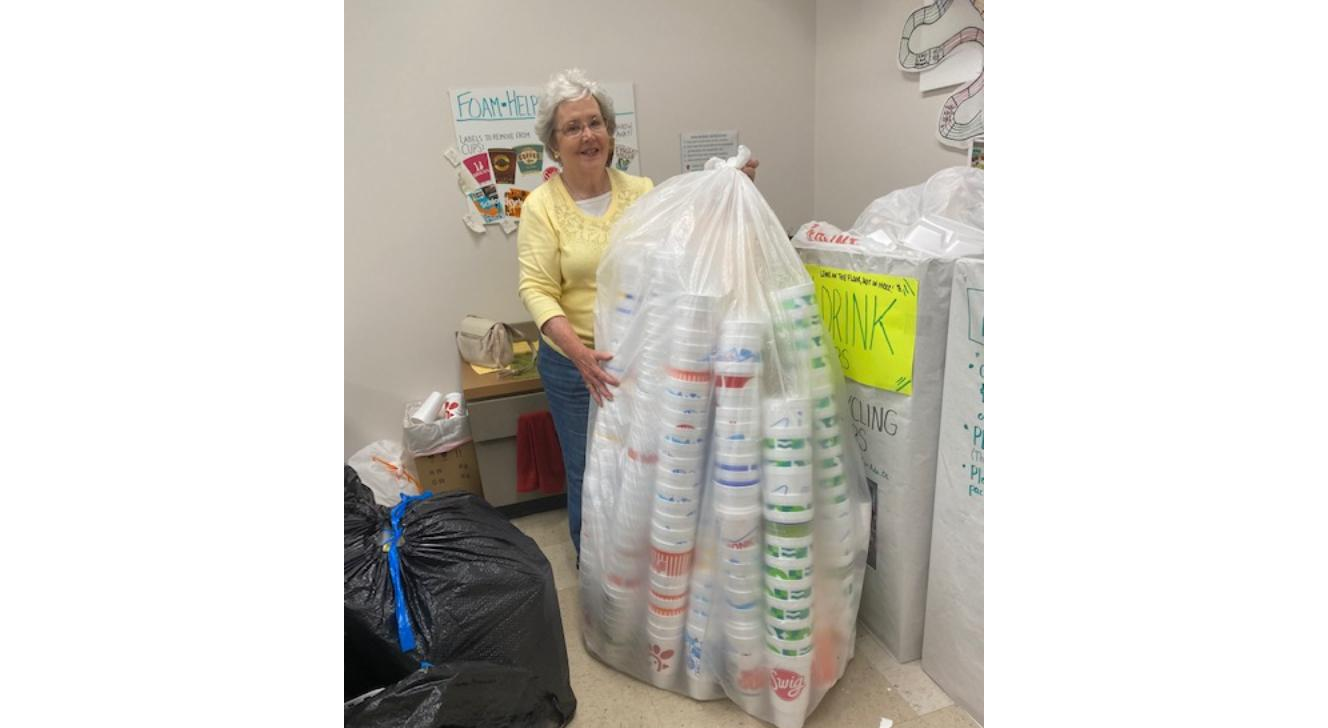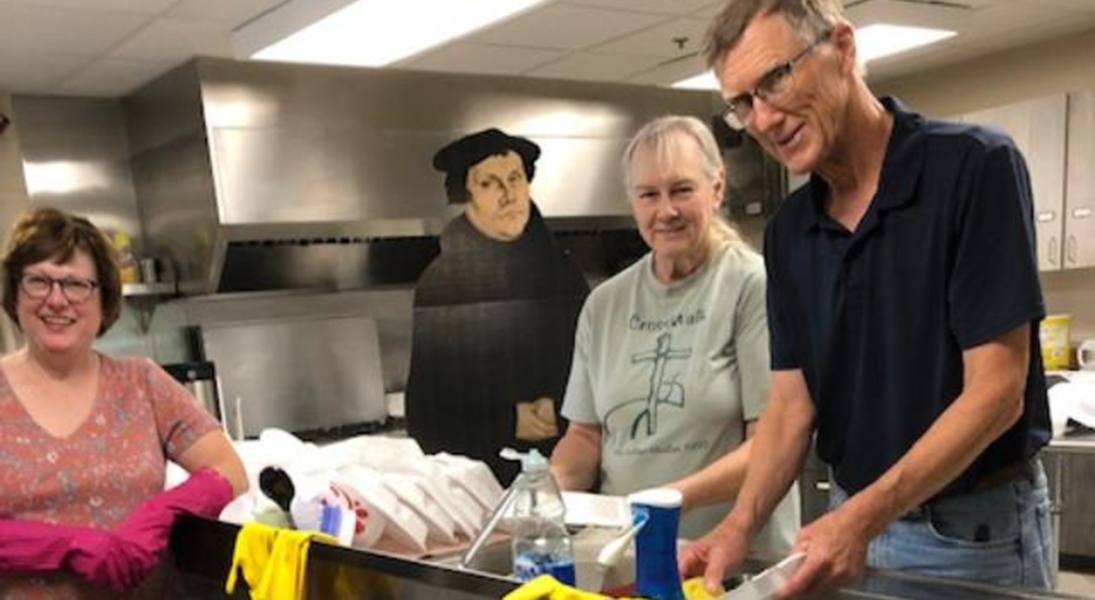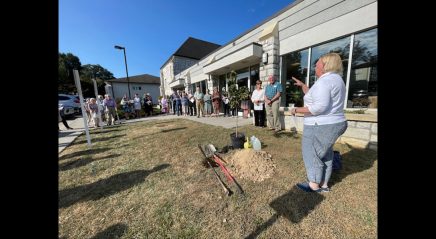Martin Luther likely wasn’t toting a Big Gulp when he went to hammer his 95 Theses to the church door in 1517. But if he were, and if he had properly disposed of the plastic foam cup, it might have lived to see this century’s 500th anniversary of the Reformation. That’s how long it takes plastic foam to break down.
Vegetables buried in a landfill decompose in five days, maybe a month. Paper, five months or less. Orange peels take as long as six months. Even an aluminum can might biodegrade in under 100 years. But that lightweight, petroleum-based plastic foam used in packaging, insulation and to-go boxes lasts 500 years. Some scientific literature even labels its lifespan as “500 years to forever.”
One ELCA congregation in Oklahoma couldn’t take it anymore.
“I could not come to balance praying for the earth and us throwing away Styrofoam (the genericized trademarked brand of polystyrene foam),” said Cathy Bowden, a member of University Lutheran Church & Student Center in Norman, Okla.
Things hit home for Bowden at one Sunday morning fellowship meal in 2017. She witnessed two 60-gallon trash bags filled to overflowing after the meal, stuffed with plates, utensils and other plastic foam products. “It just seemed so hypocritical,” she said. “And it ate and ate at me.”
Lightweight, petroleum-based plastic foam used in packaging, insulation and to-go boxes lasts 500 years.
The former schoolteacher, fundraiser and training consultant spoke up, and, as congregations are wont to do, she was appointed to head University’s environmental stewardship team. Many of the church folk, city leaders, university students and community volunteers who now play a part in University’s foam-recycling effort say the church tapped the right person.
“[Cathy] is so passionate,” said Jane Dmytryk, a volunteer from First Presbyterian Church Norman who, along with her husband, John, regularly helps with University’s recycling project. “She eats, lives and breathes recycling.”
One-of-a-kind project
In a national landscape where any recycling of plastic foam products is rare, University now stands out as perhaps the only faith community that collects, processes and sells marketable foam for a second life as valued consumer products.
That sturdy, “faux wood” outdoor furniture? You might be sitting on reprocessed foam. Inexpensive picture frames, attractive crown molding that adds style to interior designs and, of course, plastic utensils all might be re-creations from recycled foam.
U.S. production of polystyrene plastics is estimated at about 3 million tons per year. Of that—and the additional 12 million tons produced worldwide—only about 1% gets recycled and reused.
“People were thrilled,” said Peggy Cook, a regional library coordinator who by 2021 had helped Bowden expand the congregation’s regular foam collections to seven outlying libraries as far away as Shawnee, some 35 miles from Norman. “People were very, very appreciative. They were so happy to keep it out of the natural ecosystem.”
At University, what began with signs and educational flyers on the importance of recycling had expanded by 2019 to 33-gallon bags going home with church members to collect their foam throwaways. A “Styro-Home Club” formed at the University of Oklahoma just across the street, and a dozen students now maintain collection boxes for foam around campus.
Donations of plastic foam items followed, often filling up to the ceiling in a former Sunday-school room now dubbed the church’s “Styro-Station.” Foam must be clean to be recycled, so “wash-a-thons” are regular volunteer events. As the recycling flyers say: “We don’t want to know what you’ve been eating!”
Enter the densifier
For two years, the congregation’s Green Team coordinated volunteer transport of those bags to the nearest foam-recycling center—an hour away.
There again, the environmental impact ate at Bowden and others. They needed a way to collect foam, condense it and make the expansive storage and expensive transportation less necessary. Enter “the densifier,” a machine that grinds and squeezes loose plastic foam products into solid, 10-pound logs.
“God has been with us since the start of this. He is using our hands and feet for his purpose, to take care of his earth.”
With a background in grant-writing, Bowden applied for and won the program a $23,000 grant, and in summer 2021, University used it to buy a Brohn Tech “Styro-Hybrid” mobile densifying unit. That August, University member’s drove to Carthage, Ill., and loaded the densifier onto a 2-foot trailer for transport back to Norman.
The densifier gave mobility to a recycling operation that by then already included other churches and denominations, the city of Norman, high school and university students, and even some local appliance and furniture stores glad to unload their plentiful foam packing. It also gave the program access to the market for a “finished” product that, after densifying, is attractive to commodity brokers looking to buy recycled foam for manufacturing.
“I kind of refer to it as a ‘Dr. Seuss machine’ because you put stuff in and something else comes out,” said Dmytryk, one of several “Densifier Dudes” who take part in the church’s once-a-week densifying days.
For three years, Bowden and her team stored those 4-foot, 10-pound logs onto pallets, aiming for the day they would reach the 20,000-pound threshold and attract a buyer. This past January, they reached their milestone and sold their stock.
In a world that throws away far too much plastic foam, can any congregation do this?
Bowden chuckled. “If you have anyone crazy enough to do it,” she said before pivoting to praise their many volunteers. “We couldn’t do it without them.”
There might, she said, be one other necessary item that’s certainly available for any willing congregation. “The things that have happened to us are not explainable in the ordinary,” Bowden added. “God has been with us since the start of this. He is using our hands and feet for his purpose, to take care of his earth.”










